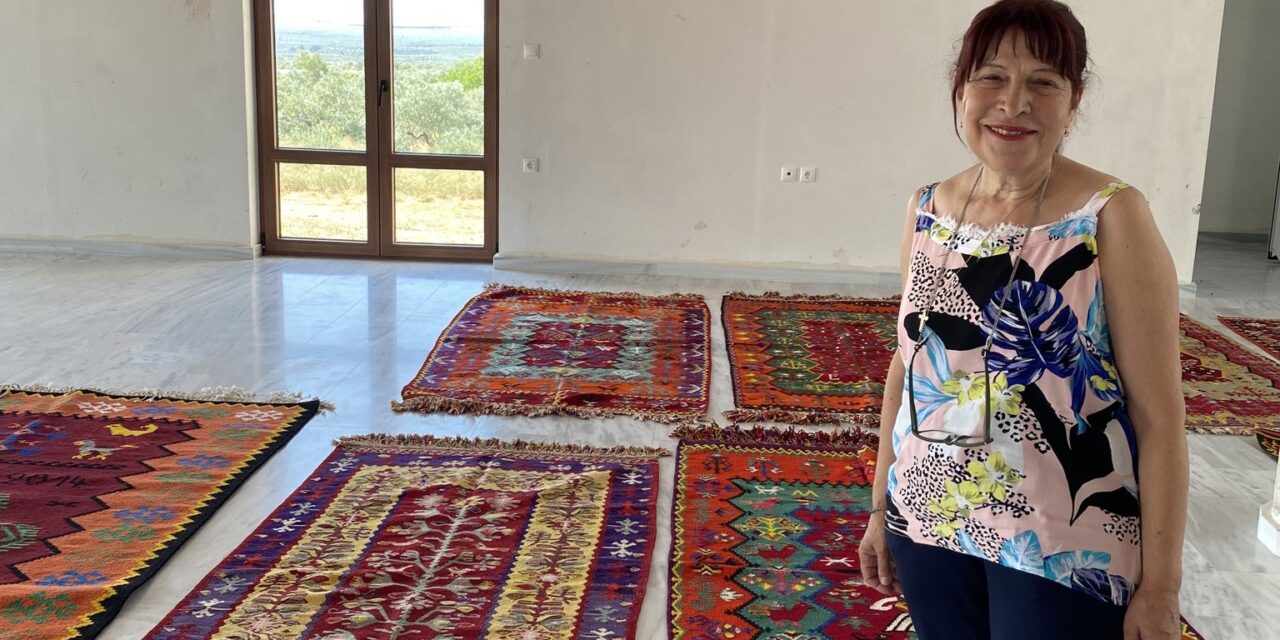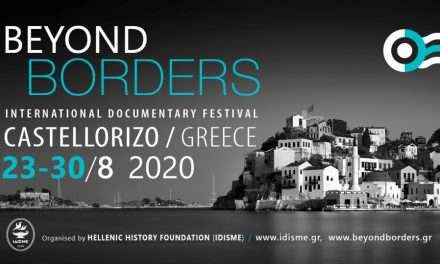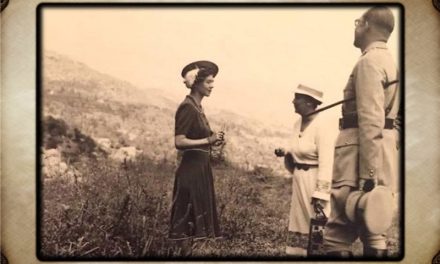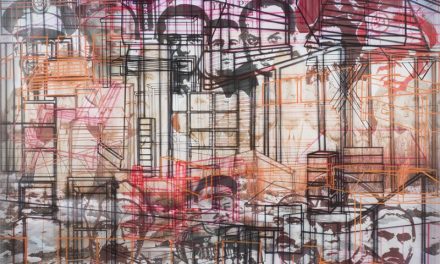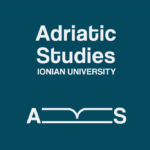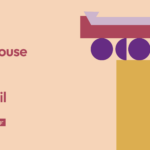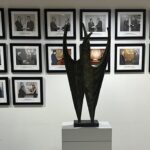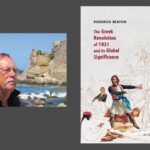The picturesque village of Geraki, resting gently on the slopes of Mount Parnon in Laconia, is located approximately 39 km southeast of Sparta. The women of Geraki have long been recognized for their skilled weaving, which they produced for both domestic and commercial use. The textile art of Geraki on the vertical loom was inscribed in the National Inventory of Intangible Cultural Heritage of Greece in 2019.
Geraki has become the focus of Gefyra (Bridge), a collaborative three-year pilot program involving the UCLA SNF Center for the Study of Hellenic Culture and the SNF Centre for Hellenic Studies at Simon Fraser University. Its aim is to catalog traditional woven arts in Geraki, and it is realized in collaboration with the Cultural Society of Geraki, which has promoted the study of the village’s past and the preservation of its cultural patrimony.
A result of this research is the publication Weaving Dreams: Kilims from Geraki, Laconia is a richly-illustrated catalog introducing the reader to Geraki’s long weaving tradition through essays on the history of the village and the presentation of kilims and tagaria from private and ecclesiastical collections. The volume, edited by Sharon E. J. Gerstel (Professor of Byzantine Art and Archaeology at the Department of Art History at UCLA and Director of the UCLA Stavros Niarchos Foundation Center for the Study of Hellenic Culture) and Sofia Pitouli, is available in English or Greek, and all proceeds from the sale of this book will benefit the Cultural Society of Geraki (the Geraki weavers) and the Benaki Museum in Athens.
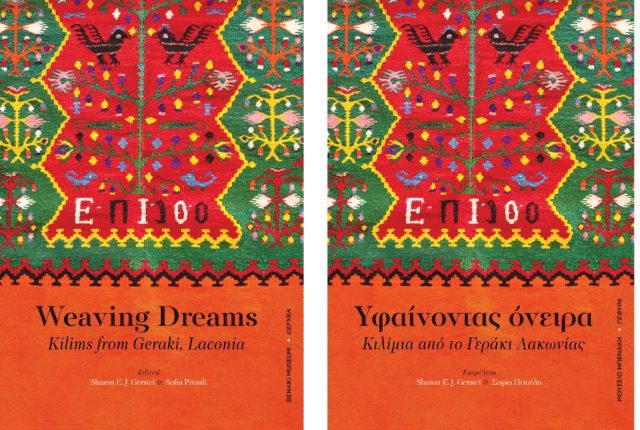
Among the publication’s main contributors is Chrysoula Stamatopoulou, lead weaving instructor in Geraki with a long experience, and member of the Cultural Society of Geraki. Stamatopoulou also took part in the event “Weaving Community: A Presentation of the UCLA SNF Hellenic Center’s Work in Greece and Los Angeles“; co-sponsored, and hosted, by Saint Sophia Greek Orthodox Cathedral, the event was held under the auspices of the Consulate General of Greece in Los Angeles and made possible thanks to the Stavros Niarchos Foundation.
The event focused especially on the multi-year project in the village of Geraki, also presenting the above-mentioned book. Joining Professor Gerstel, who discussed the work of the Center in L.A. and Greece, Stamatopoulou demonstrated weaving on the vertical loom for those attending.
Greek News Agenda spoke* with Mrs. Stamatopoulou on the rich weaving tradition of Geraki and her involvement with the Gefyra project.
Tell us about the history of the tradition of weaving in the village of Geraki. How far back do records go and what is the importance of this tradition for the area’s cultural identity?
Weaving in the area of Geraki has its roots in classical antiquity; excavations in the ancient acropolis of the village carried out by the University of Amsterdam and the Netherlands Institute at Athens have brought to light more than 500 loom weights – that is, hanging weights that were used to keep the threads taut. They were made of clay and most of them were pyramid-shaped, and the rest triangular. Excavations at the Byzantine castle also brought to light home workshops, with metal loom combs, weights and spindle whorls. One can see how old the kilims in the collection of the Cultural Society of Geraki are, since each bears the name of the weaver and date of its creation; the oldest one we have dates to 1686. Also, there are records of our kilims in dowry agreements inside and outside the region of Laconia from the 18th to the 20th century.
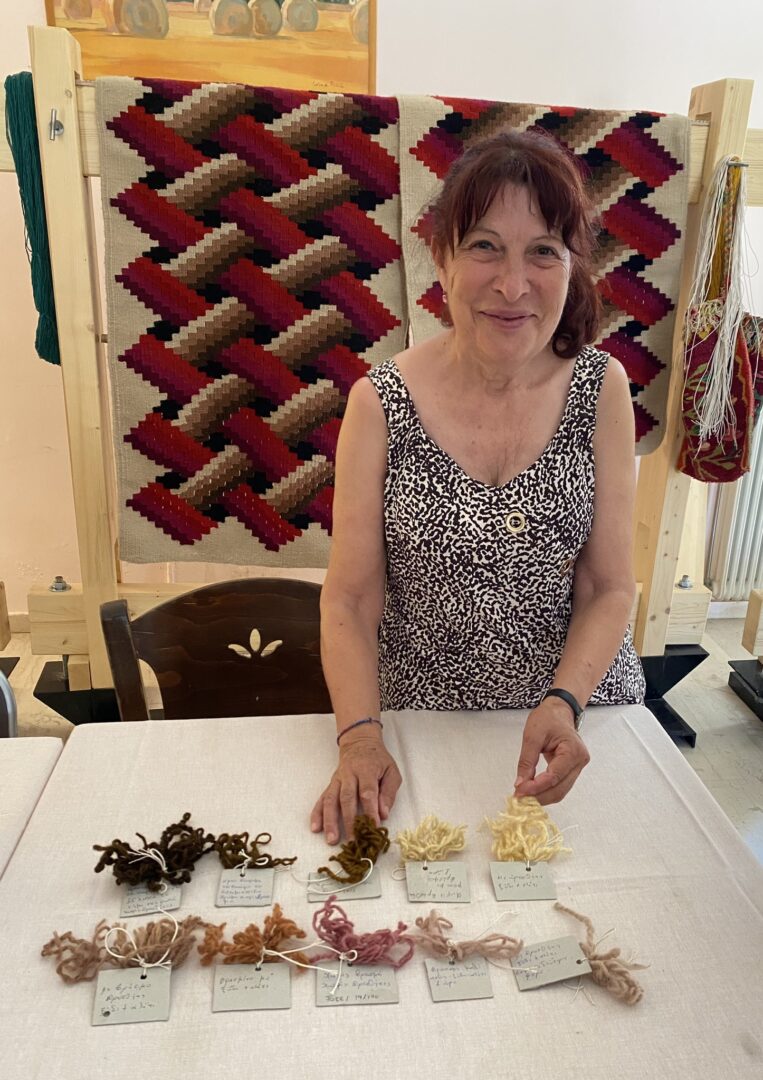
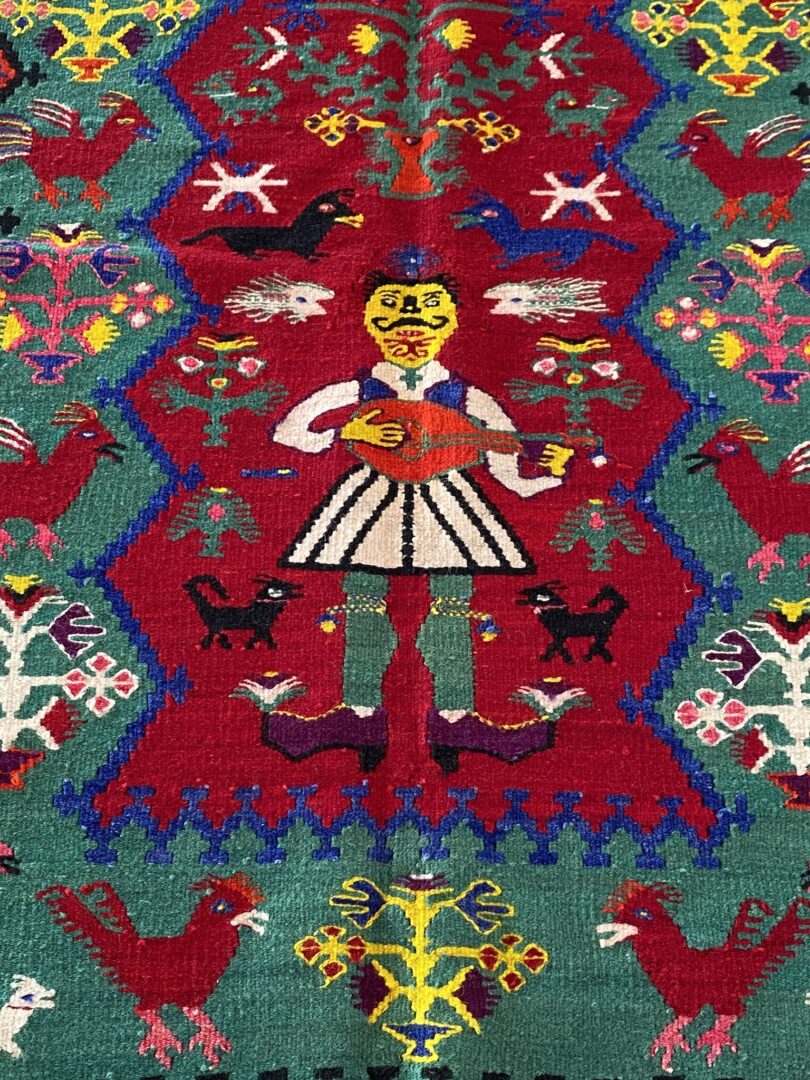
In your opinion, what is the future of this tradition in today’s technologically advanced society with its mass production lines?
I believe that if we adapt traditional motifs used in weaving and apply them to modern, practical creations, such as handbags, belts, fabric-bound notebooks, wedding & baptism favors, etc, the future of weaving looks bright.
For example, since 2010 I’ve had the pleasure of weaving 300 belts which were sent to a French fashion house and used in evening gowns.
How did you become involved in the creation of the book Weaving Dreams: Kilims from Geraki, Laconia?
Three years ago, when Professor Sharon Gerstel was in Greece with her students from UCLA thanks to the Gefyra program, they visited Geraki’s Byzantine castle; she learnt about the area’s weaving tradition and met with me to see our collection. This is when the idea to photograph the village’s old kilims was born. Geraki’s Cultural Society accepted this proposition, and they came back the following summer for the photoshoot.
We opened up our wooden chests and even we were unaware of the wealth of patterns and colors we would discover.
Please tell us about your participation in the “Weaving Community” event organized by the UCLA Stavros Niarchos Foundation in collaboration with the Consulate General of Greece in Los Angeles, on the occasion of the book’s publication.
The 286-page catalog was a result of the research conducted as part of the Gefyra project, and the photographs of the kilims. I was invited to Los Angeles for the presentation of the catalog which took place in the Saint Sophia Greek Orthodox Cathedral.
The hospitality and the interest of the people was very moving. I must give special mention to Ms Christina Valassopoulou, Consul General of Greece in Los Angeles, for her great interest in Geraki’stradition as well as for her hospitality.
I was also impressed by the interest shown by Americans who attended the event; it confirmed my belief that Greek craftsmanship can touch anyone. I would like to thank Prof. Sharon Gerstel for her hospitality and the honor she did me, inviting me to the USA to say a few words about the art that I love and have been practicing since I was a child. This opportunity was unique because I have always wanted my art to be known to more people.
*Interview by Nefeli Mosaidi. Photos courtesy of Gefyra program.
Read also via Greek News Agenda: Reading Greece | Sharon Gerstel: “Byzantine History opened my eyes to a culture that has long been marginalized in our studies”; Mingei Project: art of the people for the people; The Museum of Modern Greek Culture; Book of the Month: Greek Folk Tales – A Look at the Temperament and Ethos of the Greek Folk Psyche
TAGS: HERITAGE

